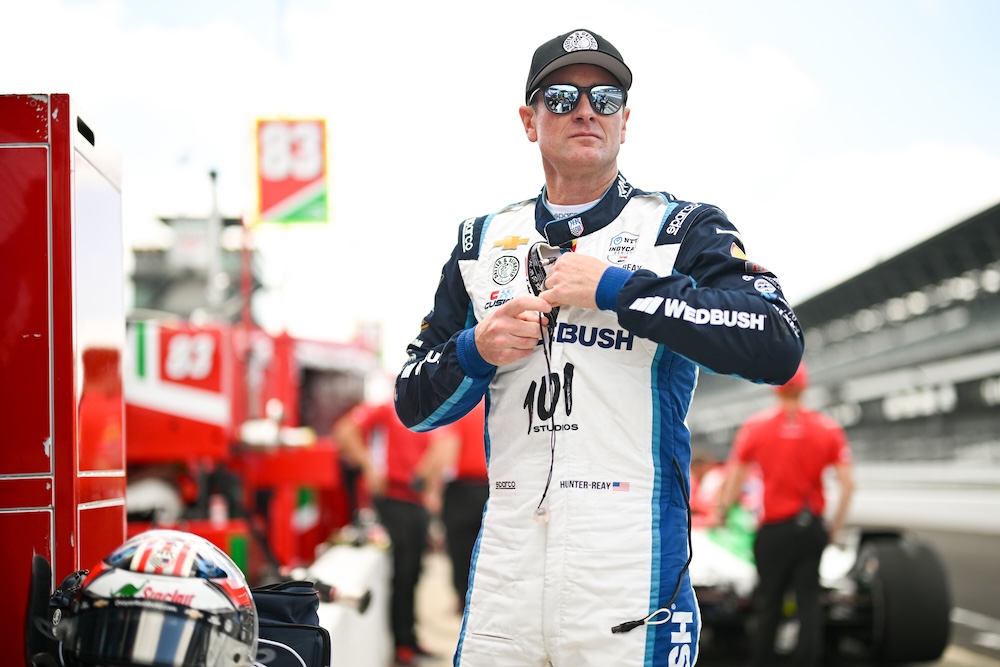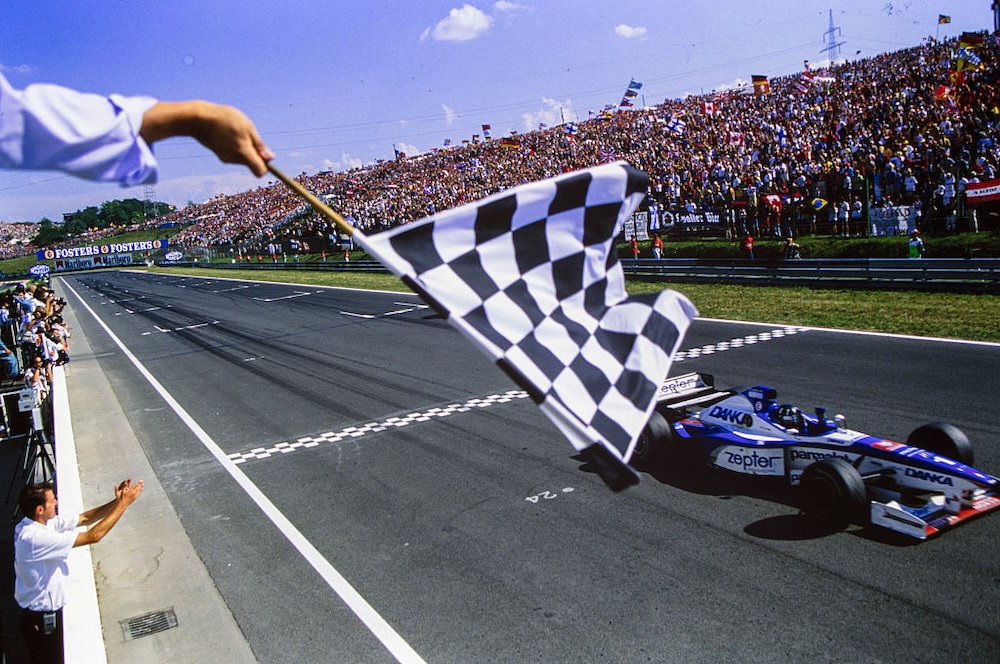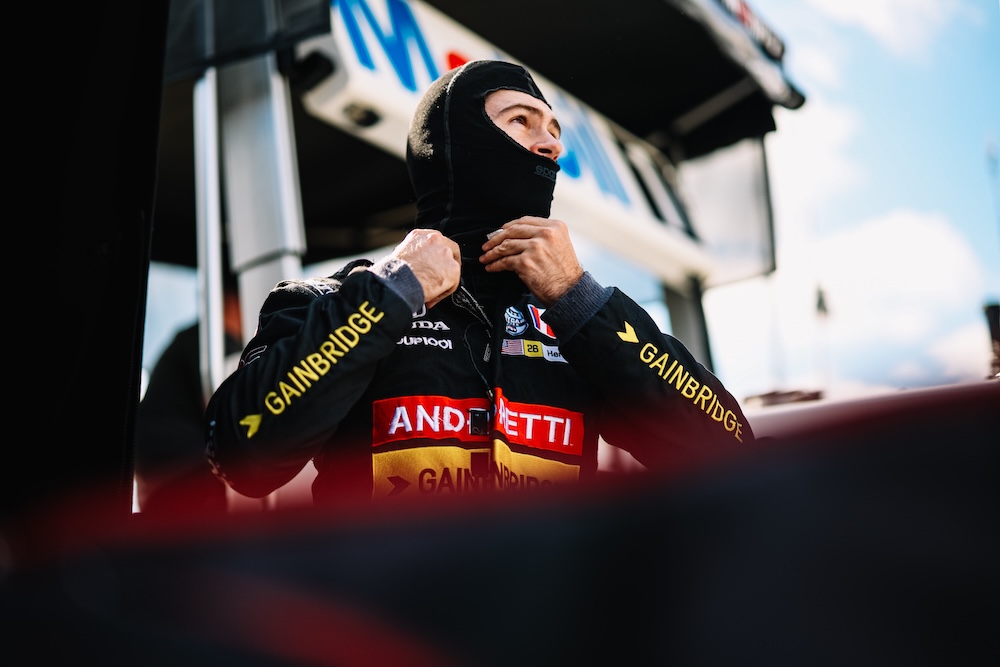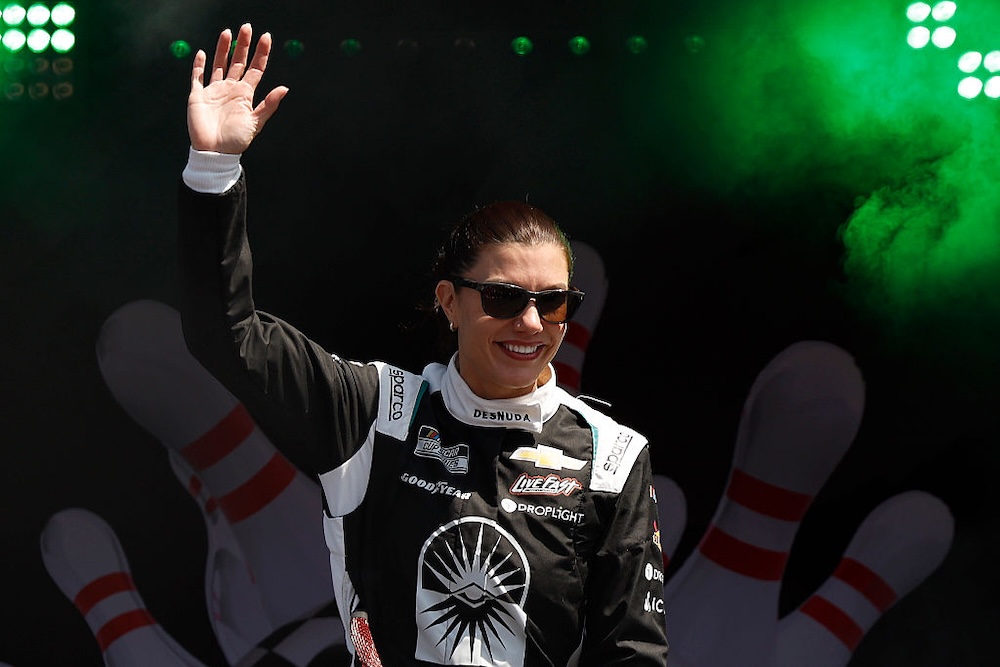Q: I’m curious what happened to the final three episodes of the 2025 season of 100 Days To Indy (Season 3). The first three episodes aired before the 500. The final three episodes were supposed to run at the end of the season and cover the final championship run. Did Palou’s dominance and early clinching cause FOX to cancel the final three episodes?
Fred (Indiana native now living is St. Louis)
MARSHALL PRUETT: Mystery solved… the confusion comes from changing the name of the final three episodes to “Road to the INDYCAR Championship.” They have aired and are available on FOX Nation.
Q: When should we expect to see some concept drawings of the new chassis? I remember IndyCar having several different concept designs from manufacturers years ago, approximately 2010. A whole two years before the DW12 rolled out to the track. It kept me engaged with the sport.
I know the chassis has been delayed. With the long off-season and most of the major silly season pieces having fallen already, Penske Entertainment should at least give us a glimpse of the future. I am curious if it would look anything like the recent Blackbird Mk 66.
Your thoughts?
Not that awesome manager of Scott Dixon, Stefan Johansson
MP: I’m told it looks like an evolution of the DW12, with F1-style wings, and not a revolutionary design. I’m also told to be on the lookout for the rendering in 2026.
Q: Any thoughts on the Palou and McLaren lawsuit?
It seems that both sides have some culpability. Now, I don’t know the parties personally so I can’t comment on the truth. But you guys at RACER have some access to this story. So what is the truth as it stands today?
Steve
MP: My thoughts: It’s sad, wasteful and vengeful. I’ve heard the combined costs with lawyers and all of the associated money spent on their cases with research and expert witnesses and whatnot is north of $20 million, which is damn close to what’s being sought in damages. That’s the wasteful and vengeful part, and stupid.
The sad part is how this was mishandled from the beginning by Palou and his former managers. If he’d gone to Zak Brown, said he’d lost the will to drive for the team, was mostly inspired by the chance to get to F1, and just wouldn’t be motivated to step down to Arrow McLaren, which was a significant step down at the time, I have to believe Zak would have listened.
I’m sure it would have angered him, and I’m sure it would have cost Palou a few million as a buyout, but Zak’s smart enough to know that one thing you can’t buy in a contract is the heart and will of a driver to give everything to the team. It’s a crappy scenario, but we’ve seen it plenty of times in recent years in a variety of sports. A player has lost faith in the team, has a multi-year contract, and wants out. Forcing the driver – Palou in this case – to honor their contract was going to be bad for both parties.
A miserable driver, even a two-time champion like Palou at that stage, would not deliver what the team needed to level up. Again, Zak’s done this long enough to know that a happy and inspired Palou would transform his IndyCar team, and a pissed and disinterested Palou would waste the his time and the team’s time while waiting to run out his contract. Instead, the poking-the-giant-bear approach was taken and a McLaren team with inexhaustible financial resources is said to be burning mountains of cash to ensure its wrath is felt.
The Ganassi team has his back, and appears to be fronting the costs to wage the counter fight, but what kind of financial ruin will be visited upon Palou in damages to pay McLaren and to Ganassi for the legal support? I don’t pretend to know the depth of the Palou-Ganassi legal defense deal, but it’s wild to consider how this could have been resolved long ago, in a person-to-person discussion, and even if it took a while to get to that point, and came with a stiff price tag for Palou, instead of this nonsense that’s been going for two years.
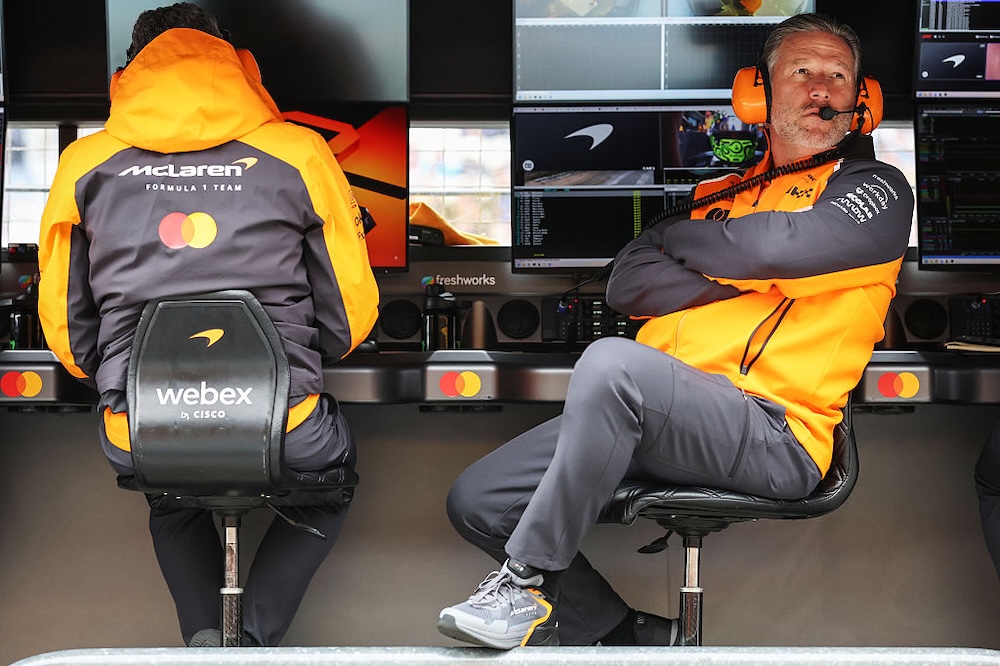
Seems like the real winners in the McLaren/Palou lawsuit so far are the lawyers. Alastair Staley/Getty Images
Q: Stoked to see Mick Schumacher so enthusiastic about this IndyCar opportunity. He would instantly become a star if he makes the switch. Two things:
First, I noticed a conspicuously large Honda logo on his helmet (along with other Honda branding elements). Is this an indication that if he were to switch, Honda would be supplying free engines/paying his salary?
Second, why isn’t IndyCar/IMS productions live streaming or at minimum producing a 30-minute testing recap ? Seems like an easy way to drive engagement in the offseason. Every test should have at least some sort of prompt recap to feed the content machine
Jah in the dirty south
MP: Mick’s a pro. Honda Racing Corporation US made its prized driver-in-the-loop simulator available to him and the RLL team last Friday to learn the Indy road course, and that’s the kind of gesture which comes with a logo, in kind, on one’s helmet. HRC also sent a film crew to document the DIL visit and Mick’s run on Monday, which adds another layer of investment from the brand in the test.
It speaks to the potential seen by Mick’s side and the team and manufacturer for 2026. There was intent behind the test, which should be obvious by all of the added elements and investments by RLL and Honda, and Mick seemed to enjoy himself and the car. Mick’s mom flew out for the test! Met the team, saw the grand RLL shop, etc. It’s the kind of thing that happens when you’re 26 and serious about making a major life change, right?
If he wants to become a full-time IndyCar driver, the door appears to be open at RLL. Now we’ll have to wait and see what Mick decides.
On IMS/IndyCar, they don’t have an unlimited budget. This wasn’t an official series test day, as in, a test organized by the series for the entire field. It was a private day, organized by RLL, and joined in by some other teams, so other than administering the test, this wasn’t the series in action on Monday. But, the series did send a shooter to grab some shots and put together a b-roll package and posted some social content. F1 doesn’t send film crews to do what you say IndyCar should do with 30-minute private testing features and live streaming. IMSA doesn’t do it. NASCAR doesn’t do it.
I wish they all did, but since it isn’t the norm, I can’t take issue here with IndyCar.
Q: Do GTP and LMP2 teams have spare cars as backups like IndyCar and other series, or do they just carry a crap ton of spare parts and hope the main tub survives? I’ve seen the videos of teams thrashing to make repairs to damage during practice and it hit me that I just don’t know what they do if it’s damaged beyond overnight repairs.
The GTP cars are pretty expensive to build so I can not see teams wanting to build more than are needed.
John Balestrieri, Waukesha, WI
MP: Every team is different, so there’s no single answer. Yes, many have spare cars, but not all. For GTP manufacturers and ORECA, maker of the 07 LMP2 chassis, there’s at least one spare tub and enough spares to built a brand-new car, if not more.
Q: Millions of people tuned into to College Gameday this Saturday and saw the Oregon Duck mascot take a shot at the Indy 500 and the state of Indiana as a whole. Indiana proceeded to thump Oregon 30-20. What would it take for Firehawk and The Duck to meet in the octagon at the Portland GP next year?
Max S
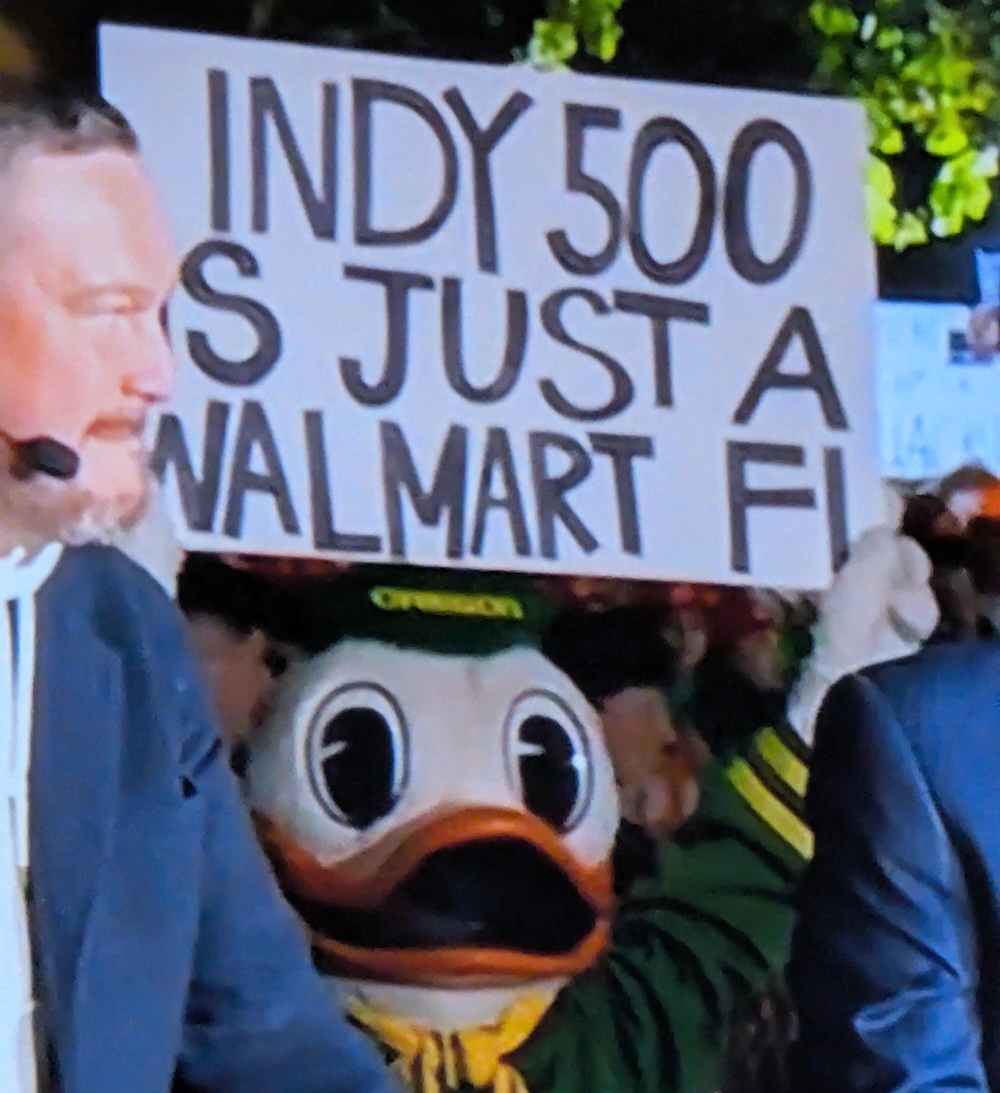
MP: This was hilarious. Firehawk is too friendly to scare anybody. Murderhawk? It scares everybody. But I just saw the guy behind the Murderhawk social account is retiring the account, so the duck is safe.
Q: I’d like to know about the rumors around Nick Tandy. There is some fans within the BTCC fan base that saw his drive with the Mini side of NAPA racing as a front for a drive in the full BTCC seat in 2026, given Porsche scaling back (yes, still in IMSA, but I’m guessing Penske will increase funding for that team) and that Dan Rowbo is expected to leave the team for Jason Plato’s new team. For me, this is wishful thinking and unrealistic, but what are the vibes around that camp?
While we’re on sports cars racing, do you think 2027 will see a return of WEC to the UK? Heard rumors it is a yes. (Definitely after how packed ELMS was in September).
Dan Mayhew, UK
MP: Why would Nick need to do a one-off drive as a front for what he’s doing next year? Wouldn’t he just do the BTCC next year if that’s what he wanted to do? Nick told me he absolutely loved the run in the Mini. I told him to do more of those types of races – just for fun – and he said he wanted to. He’s one of the greatest sports car drivers of the century. If his current employer is uninterested in his services, he’ll be snapped up by a rival manufacturer in an instant. If he wants to downsize his life and take a massive pay cut, he’ll go from GTP to BTCC, which I wouldn’t recommend.
I’ll never understand why the WEC doesn’t have a permanent race in the UK, but since it’s a fleeting or fluctuating thing, I hold limited hope that the oversight will be corrected in 2027.
Q: I don’t want to get my tin foil hat on too tight, but the news that Porsche is ending its WEC Hypercar program at the end of the year gets a guy wondering and hoping that maybe they could be reallocating resources to develop a 2.4L twin turbo V6.
Add to that the rumors of AO being interested in expanding into IndyCar, as well as their relationship with Porsche, it really has me doing some major wishful thinking that we could be seeing some dinosaur liveries powered by Porsche in 2028. I’m not getting my hopes up as this seems more a pipe dream as of now, but who knows?
Alan Bandi, Sarver, PA
MP: We’ve expected one of Porsche’s 963 programs to end and spent the first months of the year in fear it would be GTP, but learned it was solid, which meant Hypercar was the concern.
It’s worth noting that AO isn’t interested in expanding into IndyCar. As the team’s head of PR told me, its CMO was asked about whether the team had interests outside of IMSA, and the answer was a general yes, with a mention of NASCAR and IndyCar, and so on.
There’s two people who dictate AO’s future, and that’s the owner/driver/funder PJ Hyett and driver/team principal Gunnar Jeannette, and they aren’t looking to go racing in NASCAR or IndyCar. So, unfortunately, that pierces a few holes in the tinfoil hat. Expressing a general interest in expansion outside of IMSA with no plans for expansion outside of IMSA is how I’d process this one. If that changes, it would be awesome.
Porsche is downsizing its factory racing programs due to a shift in EV strategies; its EVs haven’t been selling well in Europe, and then there’s the bigger issue, which is an overall decline in global sales. Its Formula E program keeps an EV-specific project going, but I wonder how long that will continue, and its marquee GTP effort in IMSA is solid through 2027, I hear, which maintains its factory involvement in its biggest sales market.
Pulling out of WEC, committing to IMSA, and spending tens of millions to do engines for a second North American racing program would be amazing, but it’s not the current plan.
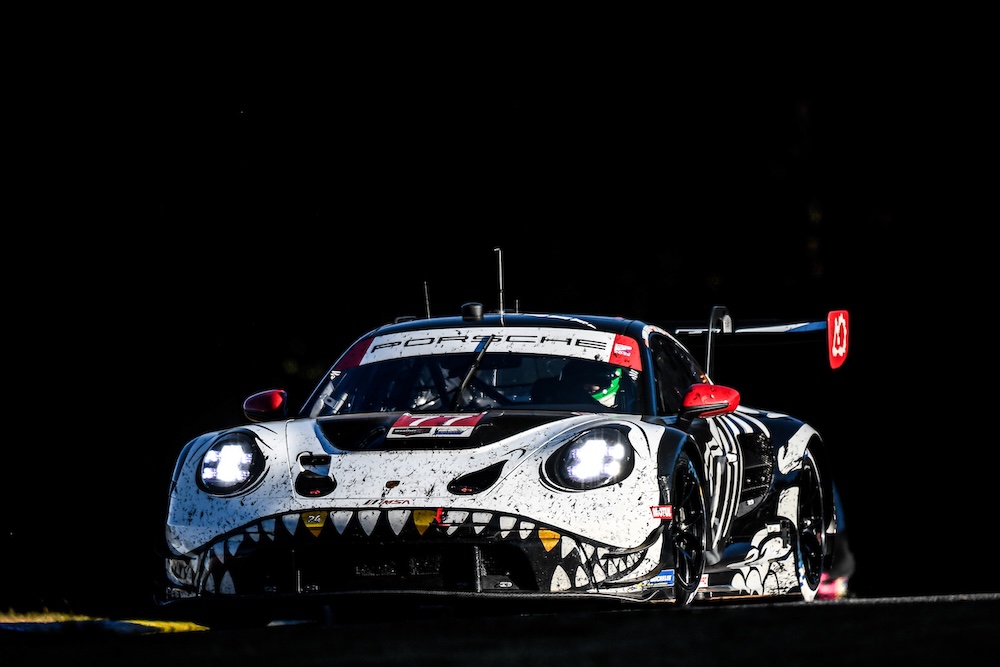
IndyCar is likely to remain dinosaur-free – unless one of the current teams decides to run with it. Any takers? Brandon Badraoui/IMSA
Q: There are still quite a few significant decisions to be made for the 2026 IndyCar season. Coyne, JHR and RLL are some of the ones that people are discussing on social media. But they seem to be ignoring the big glaring decision, and you may be a prominent person having to make that decision.
What am I talking about? My kids and wife ask that question a lot. I’m talking about today’s grand announcement! The big one so many have been waiting for! Rush is going on tour in 2026. So, what do you if their weekend in your area is also an IndyCar race weekend elsewhere. What do you do? WHAT DO YOU DO?!?!?
John Balestrieri, Waukesha, WI
MP: IndyCar = Will be around for a long time.
Rush on tour, albeit minus the GOAT on drums = Will not be around for a long time. Go to the concert because it might not happen again.
Q: I saw the minor bombshell you dropped in the Mailbag last week about VeeKay going to Juncos. Assuming this leaves Lundqvist without a seat for 2026 then? Shame, if so. Do you know if he has anything else lined up?
John A.
MP: By the time you’re reading this, Rinus is confirmed at JHR. Linus is still working on opportunities; spent time with him last week at Petit Le Mans and introduced him to a few IMSA team owners to make sure he explores both paddocks. Saw him on Monday at Indy as well and can confirm he’s doing his best to find an IndyCar home. Without money to offer, he’s at the mercy of those who are willing to pay for him to drive their cars, and there aren’t many of those left.
Q: Intrigued by the Blackbird 66 idea, if only because some out of the box thinking is welcome – if not necessarily practical, as Marshall pointed out with respect to cornering.
But is it really necessary to go that far to get the desired results? Didn’t CART in the ‘90s have the correct formula: big HP engines in chassis that relied more reliance on mechanical grip than aero? I’m no engineer, but wouldn’t more power and less downforce create a racy beast?
Al, Boston
MP: No. the CART cars of the 1990s had tons of aero and constant development and had lots and lots of downforce when needed.
Action in racing happens in four phases: On the straights, into the corners, in the corners, and exiting the corners. Downforce is pretty important in the last three phases if you like Indy cars to go fast. You can go back to pre-1968 where wings weren’t allowed, and there was great racing, but there wasn’t great power. Or speed. The performance was balanced in that regard where no single area jumped far ahead of the others.
The Blackbird 66 takes two areas – giant power and a near-total lack of downforce – and goes wild, which is really fun, but it takes the overall performance way out of balance.
There’s a belief that some refuse to let go of with big power/small downforce being the magical answer to things, but I don’t know what question is being asked. As well, I can’t find a modern example where huge power/minimal downforce been proven as the best formula.
If we go back many decades, sure, we can find things like Can-Am where 1000hp-plus Porsches and McLarens thrilled the world, and they were rockets on the straights and unable to do much with all of that speed once corners were involved. Also, almost every single thing about those cars has changed by a massive amount. Chassis construction. Engine type. Transmissions. Tires. Electronics. Aerodynamics. Etc.
